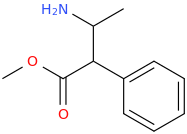Kittycat5
Bluelighter
MrM301, the article you quoted is talking about the enteral nervous system, not the central nervous system. The GI tract has a large neuronal network that can act independent from the brain for digestive processes. That quote is basically saying both endogenous and exogenous opioid agonist affect nearly all pathways involved in proper function thus leading to constipation. Your thoughts on endorphins and enkephalins stimulating GI motility are incorrect. They do exactly the opposite within the enteric nervous system.
I imagine the brain has some involvement, as it does on every organ system, but the natural opioids in the CNS would still most like have an inhibitory effect on motility, fluid secretion etc. It is just not as clear on how much they effect the GI tract.
I imagine the brain has some involvement, as it does on every organ system, but the natural opioids in the CNS would still most like have an inhibitory effect on motility, fluid secretion etc. It is just not as clear on how much they effect the GI tract.








